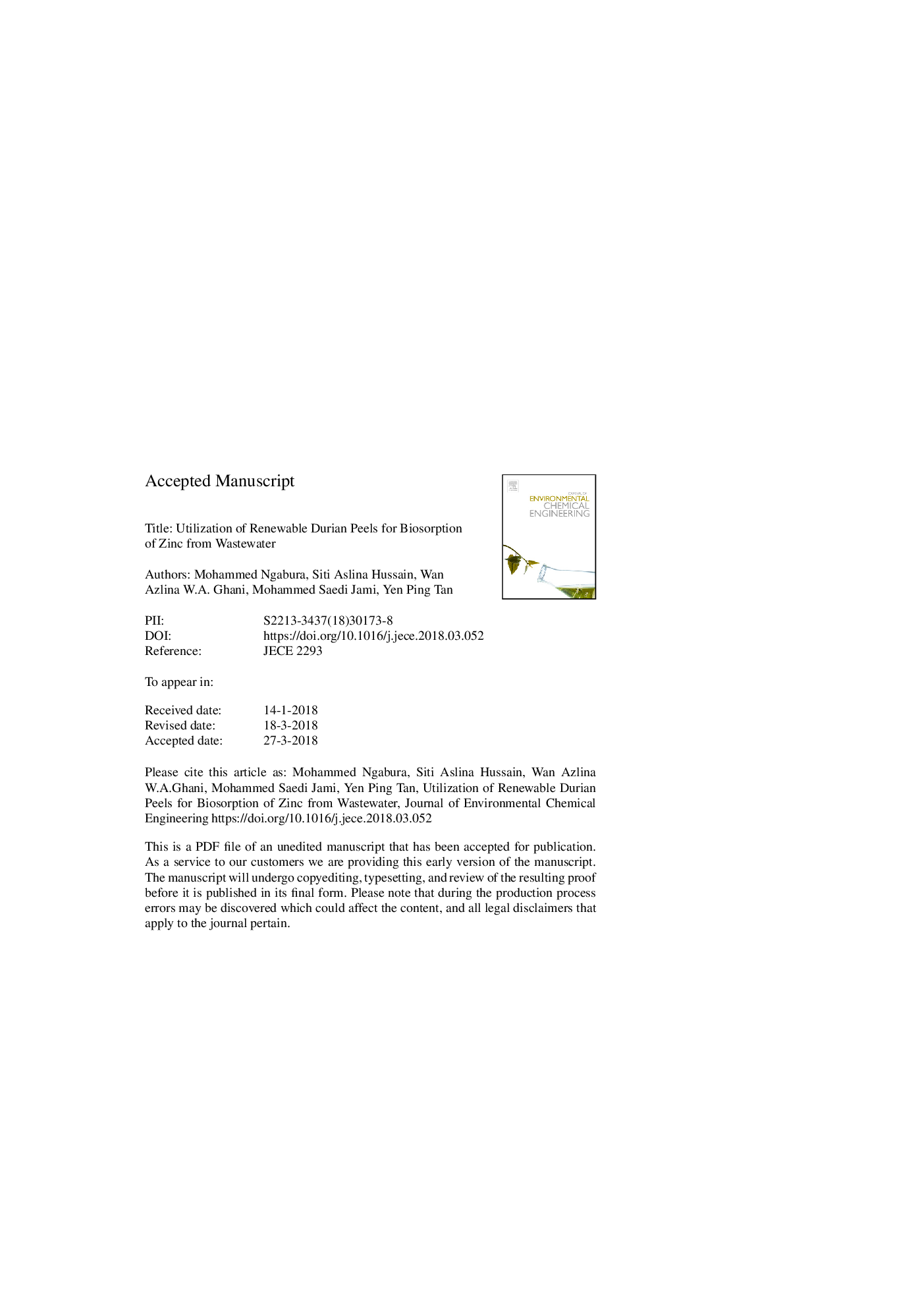| Article ID | Journal | Published Year | Pages | File Type |
|---|---|---|---|---|
| 6664052 | Journal of Environmental Chemical Engineering | 2018 | 49 Pages |
Abstract
Durian peel is among the renewable biomass wastes abundantly available in Malaysia. An implication of untreated biological materials for biosorption process was intensively reported, that prioritize our work towards sorbent modification. The biosorption potentials of hydrochloric acid (HCl) modified durian peels (HAMDP) for removal of Zn (II) from simulated wastewater was investigated. Characterization of HAMDP was performed by ATR-FTIR, SEM and BET. Spectroscopic studies showed the predominant contributors for Zn (II) biosorption on HAMDP is attributed to hydroxyl, carbonyl, carboxyl and amides groups. Batch adsorption studies revealed optimum conditions of pH 8, 0.5â¯g biosorbent dose, 4â¯h contact time and reaction temperature of 313â¯K. Non-linear isotherm models suggested applicability of Tempkin and Langmuir models at 313â¯K. The Langmuir maximum adsorption capacity was 36.73â¯mg/g. Kinetic studies revealed applicability of pseudo-second-order model. Webber-Morris model indicated possible role of diffusion of Zn (II) within the particles of HAMDP during the sorption process. Freundlich constant and activation energy values confirmed the physical nature of the process. Thermodynamic studies indicated that the process is exothermic and spontaneous. Regeneration studies depicted that HAMDP is economically viable. Conclusively, HCl served two significant purposes, namely; a good modification reagent and best eluent in Zn (II) recovery. Therefore, HAMDP is relatively effective, efficient, economical and most importantly “renewable and sustainable” biosorbent for Zn (II) removal from wastewater.
Related Topics
Physical Sciences and Engineering
Chemical Engineering
Chemical Engineering (General)
Authors
Mohammed Ngabura, Siti Aslina Hussain, Wan Azlina W.A. Ghani, Mohammed Saedi Jami, Yen Ping Tan,
